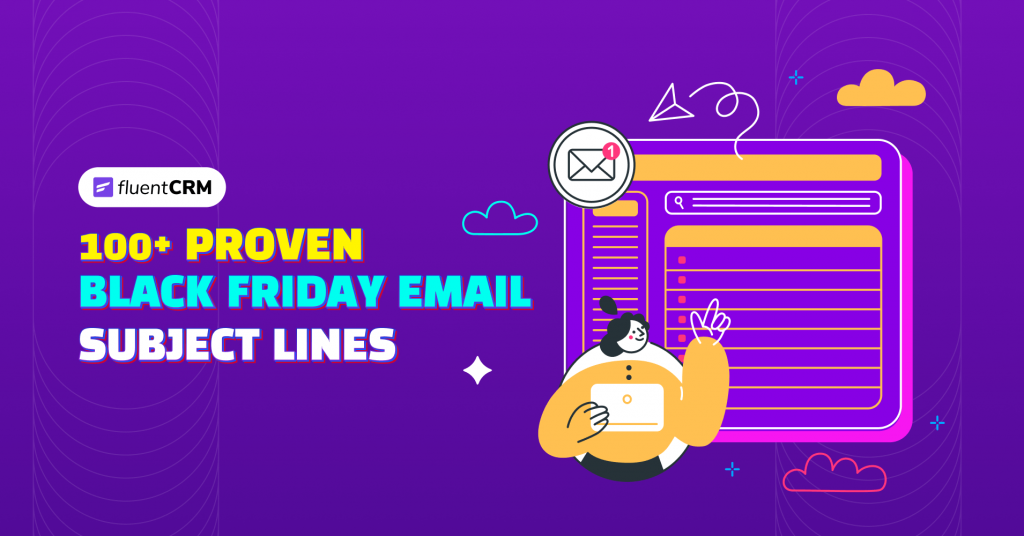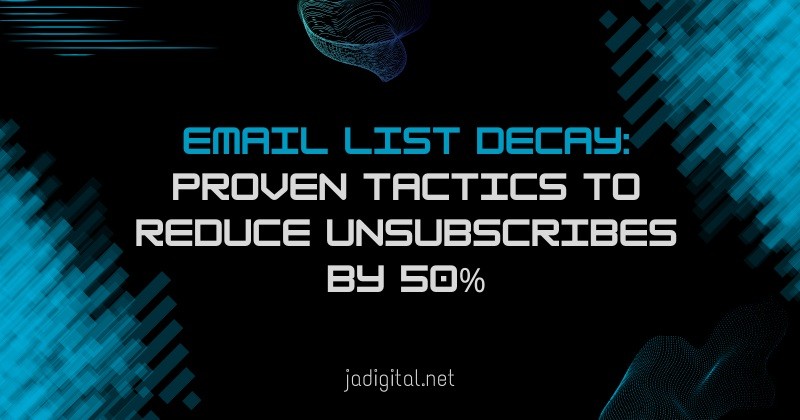Email list decay is a common problem. Unsubscribes can hurt your marketing efforts.
In this blog post, we will explore email list decay and how to reduce unsubscribes. Maintaining a healthy email list is crucial for effective marketing. High unsubscribe rates can diminish your reach and impact. Understanding the reasons behind unsubscribes can help you address the issue.
By applying proven tactics, you can significantly reduce the number of people leaving your list. This will ensure your messages reach more engaged and interested recipients. Let’s dive into practical strategies to keep your email list healthy and reduce unsubscribes by 50%.
Introduction To Email List Decay
Email list decay is a real challenge for marketers. It can significantly impact your email marketing efforts. Understanding email list decay is crucial to maintain engagement and reduce unsubscribes.
What Is Email List Decay?
Email list decay refers to the gradual loss of subscribers over time. People may change their email addresses, lose interest, or mark your emails as spam. This natural process can shrink your email list and lower engagement rates.
Impact On Businesses
Email list decay affects businesses in various ways. It leads to a decrease in open rates and click-through rates. This can reduce the overall effectiveness of your email marketing campaigns.
Lower engagement means fewer conversions and sales. This directly impacts your revenue. Businesses must keep their email lists fresh and engaged to maximize their marketing efforts.

Credit: fluentcrm.com
Understanding Unsubscribes
Understanding why subscribers leave your email list is crucial. Unsubscribes affect your email marketing efforts. They reduce your reach and impact. Knowing the reasons behind unsubscribes can help you improve.
Common Reasons For Unsubscribes
People unsubscribe for various reasons. One major reason is irrelevant content. If your emails don’t match their interests, they will leave. Another reason is email frequency. Sending too many emails can annoy your subscribers. They may feel overwhelmed and opt out.
Poor email design also plays a role. Emails that look unprofessional or are hard to read drive people away. Additionally, some subscribers may leave due to privacy concerns. They worry about how their data is being used.
Identifying Patterns
Identifying patterns in unsubscribes helps you take action. Track your email metrics regularly. Look for spikes in unsubscribe rates. These spikes can indicate issues with specific emails or campaigns.
Pay attention to feedback from subscribers. Surveys and direct feedback provide valuable insights. Analyzing this data helps you understand what went wrong. Use this information to adjust your strategy and reduce unsubscribes.
Proven Tactics To Reduce Unsubscribes
Email list decay can be a real headache. You work hard to build your list, but each unsubscribe feels like a punch in the gut. Don’t worry, though—there are proven tactics to reduce unsubscribes by up to 50%. Let’s dive into some actionable strategies that can help you keep your audience engaged and loyal.
Segmentation Strategies
Segmenting your email list is a game-changer. By dividing your audience into smaller groups based on their interests, behaviors, or demographics, you can send more relevant content.
Imagine you’re a fashion retailer. You can segment your list into categories like ‘men’s wear’, ‘women’s wear’, and ‘accessories’. This way, your subscribers get emails tailored to their preferences, making them less likely to unsubscribe.
Use tools like Google Analytics and customer surveys to gather data for effective segmentation. The more specific you get, the better your results.
Personalization Techniques
Personalization goes beyond just including a subscriber’s name in the email. It involves crafting content that feels uniquely relevant to them. This could be based on their past purchases or browsing history.
Think about your own inbox. Which emails do you open and read? Probably those that address your needs and interests directly. Make your subscribers feel special by sending personalized offers or recommendations.
One practical tip: use dynamic content blocks in your emails to show different products or messages to different segments. This makes your emails feel more custom-made.
Are you utilizing segmentation and personalization in your email marketing? If not, what’s stopping you?
Start implementing these tactics today and watch your unsubscribe rates plummet. The effort you put into understanding and addressing your audience’s needs will pay off in loyalty and engagement.

Credit: www.zerobounce.net
Maintaining A Healthy Email List
Maintaining a healthy email list is crucial for your email marketing success. A clean and engaged list ensures better deliverability and higher open rates. This leads to improved customer relationships and more conversions. Here are some proven tactics to reduce unsubscribes by 50%.
Regular List Cleaning
Regularly clean your email list to remove inactive subscribers. This helps to maintain a healthy email list. Use email verification tools to identify invalid email addresses. Remove these addresses from your list. Also, segment your list based on engagement levels. This allows you to focus on active subscribers.
Engagement Best Practices
To keep your subscribers engaged, send relevant and valuable content. Personalize your emails to cater to individual preferences. Use clear subject lines to grab attention. Ensure your emails are mobile-friendly. Encourage feedback and interaction. This keeps your audience interested and reduces unsubscribes.

Credit: automatorplugin.com
Conclusion
Reducing email list decay is crucial for your business success. Apply these tactics consistently. Engage with your audience regularly. Offer valuable content to keep subscribers interested. Monitor your email performance frequently. Make adjustments based on feedback and data. Always prioritize your subscribers’ needs and preferences.
This approach builds trust and loyalty. Happy subscribers mean fewer unsubscribes. Stay committed, and you will see positive results. Your email list can thrive with the right strategies.
